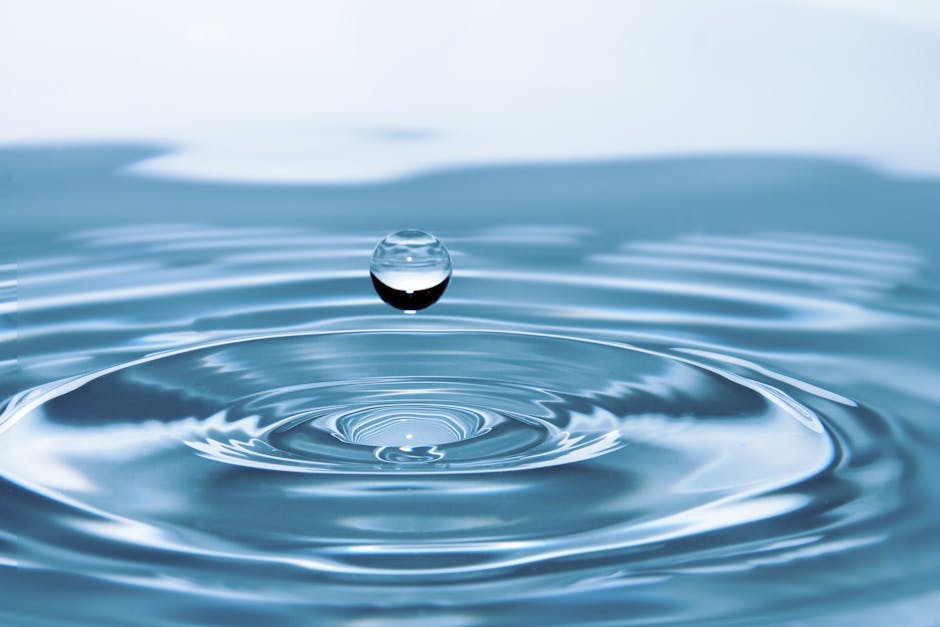
Embarking on a hiking adventure requires more than just a passion for exploration; it demands preparation, especially when it comes to staying hydrated. Enter the realm of portable water filters for hikers, a crucial companion for any outdoor enthusiast. With the advancement of purification technology, hikers no longer have to worry about the quality of their drinking water.
The essence of a portable water filter lies in its ability to transform natural water sources into safe, drinkable water. This means freedom to explore without the extra weight of carrying water for days. But not all water filters are created equal. The latest systems boast an advanced purification process, capable of eliminating bacteria, protozoa, and even viruses.
Why should a hiker consider investing in a water filter with an advanced purification system? The answer is simple: safety and reliability. Trekking through remote areas means relying on streams, lakes, and rivers for hydration. With the right water filter, adventurers can ensure their water is free from pathogens that can cause serious health issues. Beyond health, these lightweight and efficient devices are designed for ease of use, making them accessible to both seasoned hikers and novices alike.
In an era where the call of the wild is louder than ever, ensuring access to clean water is paramount. This guide aims to unravel the intricacies of portable water filters with advanced purification systems, highlighting their importance and utility in modern-day hiking. Prepare to embark on your next journey with confidence, knowing your hydration needs are secured.

Advanced Purification: Key to Safe Hydration
Ensuring access to clean and safe drinking water is a cornerstone of healthy living. Advanced purification technology plays a crucial role in achieving this goal, serving as the backbone of modern water treatment processes. Not only does it remove contaminants that can pose health risks, but it also helps improve the overall taste and quality of water. This is essential, considering the vast array of pollutants that can infiltrate water sources, ranging from industrial waste to natural impurities.
Among the most effective methods of advanced purification is reverse osmosis, which uses a semi-permeable membrane to remove ions, unwanted molecules, and larger particles from drinking water. Another invaluable technique is ultraviolet water purification, which employs UV light to kill bacteria and viruses without adding chemicals to the water. These methods, along with activated carbon filtration and distillation, are instrumental in providing safe, clean water to communities around the world. Embracing these technologies is not just about mitigating health risks; it’s also about fostering sustainable water management practices that can support the needs of an ever-growing population.
When embarking on outdoor adventures or preparing for emergency situations, having access to clean water is essential. Let’s face it, we can’t lug around gallons of water wherever we go. That’s where a portable water filter steps in as a game-changer. However, not all portable water filters are created equal. To ensure you’re getting the best possible option, we’ve lined up the Top 5 Characteristics of an Effective Portable Water Filter. Dive in to make sure you’re fully equipped for your next adventure or ready to tackle any emergency head-on.
Key Features of a Reliable Portable Water Filter:
- Effectiveness Against Microorganisms: Look for filters capable of removing bacteria, protozoa, and viruses. Choosing a filter that meets or exceeds EPA standards is a smart start.
- Portability: It should be lightweight and compact enough to fit in your backpack or emergency kit without taking up much space.
- Capacity and Flow Rate: Consider how much water it can filter at a time and how quickly. A balance between speed and volume ensures you stay hydrated without long waits.
- Durability: Opt for a water filter made from sturdy materials to withstand rough handling and harsh outdoor conditions.
- Filter Lifespan: Pay attention to how long the filter can last before it needs to be replaced. A longer lifespan means less hassle and more value for money.
There you have it, the essential characteristics to consider before investing in a portable water filter. Remember, having access to clean water is a necessity, not a luxury, especially in unpredictable situations. Choose wisely, stay safe, and keep hydrated.

Maintenance Guide for Hiking Water Filters
Maintaining your water filter is essential for any hiking enthusiast. A properly maintained water filter ensures that you have access to clean and safe drinking water throughout your adventures. Regular maintenance not only prolongs the life of your filter but also prevents the buildup of harmful pathogens that could jeopardize your health.
Start by disassembling your water filter according to the manufacturer’s instructions. Carefully remove each component, paying special attention to the filter element. Rinse all the parts with clean, cold water. For ceramic filters, use a soft brush to gently scrub away any debris. Chemical sanitizers should be used sparingly, only as directed, because they can degrade some filter materials over time. It’s crucial to let all parts air dry completely before reassembling to prevent the growth of mold or bacteria.
Aside from routine cleaning, storage is key to maintaining your filter’s efficacy. When not in use, keep your filter in a cool, dry place. If your filter will be stored for an extended period, disassemble and dry it thoroughly to prevent freezing damage or the growth of microorganisms. Never store your filter wet, as this can significantly reduce its lifespan. By following these simple steps, you can ensure that your water filter remains a reliable companion on your hiking trips for years to come.
Embarking on a journey with a portable water filter can seem like a straightforward solution to stay hydrated and healthy. However, common mistakes can turn this seemingly simple solution into a complicated ordeal. Let’s dive into the common errors people make with portable water filters and how you can sidestep these pitfalls to ensure your adventure remains as refreshing as the water you intend to drink.
Common Mistakes and How to Avoid Them
- Not Pre-Filtering Turbid Water: Attempting to filter murky water directly can clog your filter. Use a cloth or coffee filter to pre-filter and extend the life of your portable water filter.
- Ignoring Regular Maintenance: Regular cleaning and maintenance are crucial. Follow the manufacturer’s instructions to prevent malfunction and maintain efficiency.
- Using Filters Beyond Their Lifespan: All filters have a lifespan. Be sure to replace your filter cartridge as recommended to ensure safe drinking water.
- Improper Storage: When not in use, store your water filter properly. Allowing it to freeze or be exposed to contaminants can damage the filter and affect its performance.
- Failing to Backflush: Regular backflushing, according to the manufacturer’s instructions, removes contaminants and maintains flow rate.
- Relying Solely on the Filter: Remember, filters do not remove viruses. In high-risk areas, consider using purification tablets or UV light in addition to your filter.
- Poor Handling of Clean Water: After filtering, ensure that the clean water is stored and handled properly to prevent recontamination.
- Overlooking the Type of Filter Needed: Not all water filters are created equal. Be aware of what your filter is capable of removing and choose one that suits the specific demands of your adventure.

The Prepared Hiker: Tips for Choosing Portable Water Filters
When embarking on a hiking adventure, ensuring access to clean water is crucial. Portable water filters have become a hiker’s best friend, offering a practical solution to stay hydrated without carrying excessive weight. However, the myriad of options on the market can be overwhelming. Knowing what to look for in a portable water filter can make all the difference in your preparedness and overall experience.
Firstly, consider the filter’s effectiveness against various contaminants. A reliable filter should protect against bacteria, protozoa, and potentially viruses. Look for filters with a 0.1 micron or smaller pore size to ensure safety from waterborne pathogens. The speed of filtration is another factor; when you’re thirsty after a long hike, waiting too long for your water can be inconvenient. Also, evaluate the filter’s durability and ease of use. A robust design that’s easy to clean and maintain will serve you well on multiple excursions.
Lastly, think about the weight and size of the filter. The ideal filter is one that won’t add unnecessary bulk to your pack yet has a sufficient capacity for your hydration needs. By focusing on these key aspects – filtering capability, speed, durability, and portability – you can choose a portable water filter that will reliably accompany you on your hiking adventures, ensuring safe and accessible drinking water whenever you need it.
Frequently Asked Questions About Portable Water Filters
Ensuring the quality and safety of the water you drink during outdoor activities or in areas with compromised water sources is crucial. Portable water filters are an excellent solution for this need. Below, we address some commonly asked questions regarding the maintenance and replacement of portable water filters.
How often should I replace or maintain my portable water filter?
Maintenance Frequency: The maintenance frequency of your portable water filter depends on several factors including the model of the filter and the quality of water being filtered. Ideally, you should clean your filter after each use, especially if the water source is visibly contaminated. For regular use, a thorough cleaning every couple of months is recommended.
Replacement Frequency: The lifespan of a portable water filter varies by model and manufacturer guidelines. As a general rule, most portable water filters need to be replaced after filtering 1,000 to 2,000 liters of water. However, always refer to your filter’s manual for specific guidelines.
What signs indicate that my portable water filter needs replacing?
A noticeable decrease in water flow through the filter, difficulty in pumping, unpleasant tastes or odors, and visible damage or wear are clear signs that your portable water filter might need replacing. Consistently monitoring your filter’s performance can help in determining the right time for a replacement.
Can I extend the life of my portable water filter?
Yes, proper maintenance can significantly extend the life of your portable water filter. This includes regular cleaning according to the manufacturer’s instructions, drying it completely before storage, and avoiding the filtration of extremely turbid or contaminated water without pre-filtering. Additionally, storing the filter in a cool, dry place when not in use helps prevent mold and mildew buildup, thereby extending its usability.





